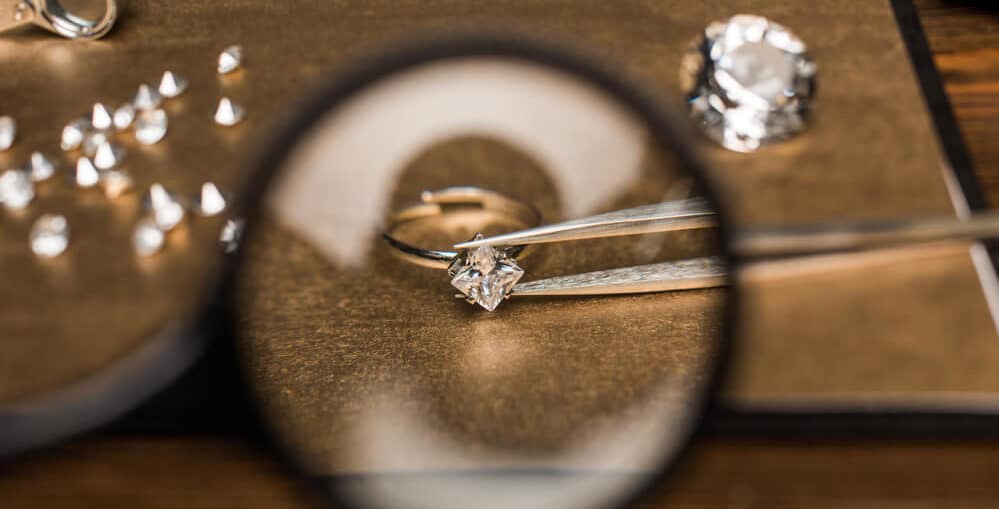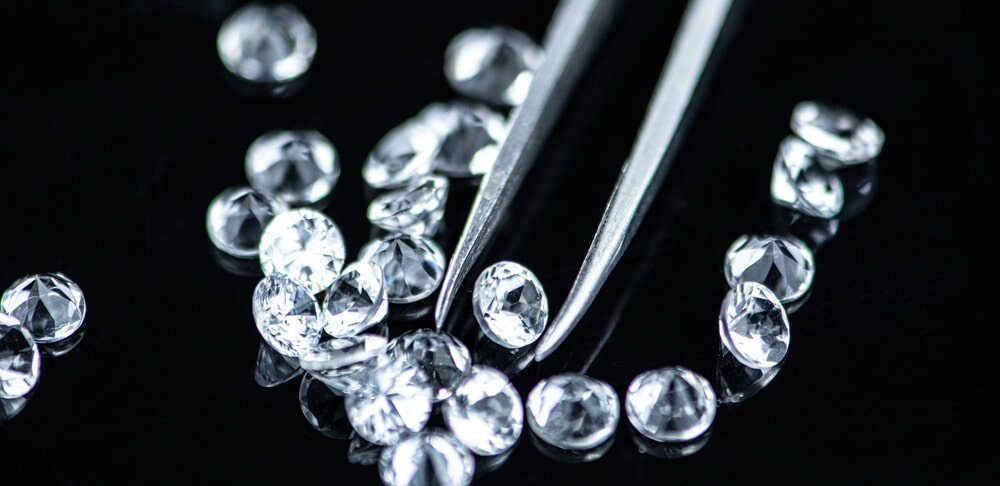How Diamonds Are Graded
-
Shira-Diamonds
-
0 Comment
The four Cs that determine the price of a diamond are color, clarity, cut and carat weight.
What Is Diamond Grading?
Jewelers and jewelry professionals like us at Shira Diamonds use a systematic way of evaluating and assessing diamonds’ value and qualities.
A grading system developed in the 1950s by GIA, the world’s first and leading authority on colored stones, pearls, and diamonds, helps diamond professionals and jewelry makers to describe and classify diamonds using four important grade identifiers: carat weight, cut, color, clarity.
The 4 Cs Or Grades Of A Diamond
The 4 Cs of diamonds—clarity, color, cut, and carat weight—describe a finished diamond’s quality. The combination of all 4 Cs determines the value of a piece.
Clarity
The clarity in diamonds means the relative absence of interior features and surface irregularities.
The interior features are called inclusions, while the surface irregularities are called blemishes. Inclusions and blemishes are the clarity characteristics of a diamond.
The blemishes are nicks and scratches on a diamond’s surface, while inclusions are on the stone’s inside. In some cases, inclusions break the surface of the stone.
A flawless-graded diamond does not have visible blemishes or inclusions when examined under a 10-power magnifying glass.
A skilled and experienced grader can describe the clarity grade of a diamond.
Carat Weight
Diamonds are weighed in great precision.
The unit of weight is metric carat or ct. One metric carat is 0.2 of a gram, which is 0.007 of an ounce.
One ounce equals 142 carats. As a reference point, a small paper clip weighs around one carat.
On the other hand, a metric carat is divided into 100 points. One point is 1/100 of a carat. A diamond weighing 0.83 carat means it weighs 83 points, also called an 83-pointer.
The value of large diamonds is higher than the small ones, which is due to the simple fact that large diamonds are rarer. Large diamonds not only cost more, but they also cost more per carat weight.
Note that the word karat is not the same as carat. Karat refers to the purity of gold in an alloy.
Cut
A beautifully cut (crafted) diamond will transmit light and sparkle. It will also display a dazzling face-up appearance.
A skilled craftsman knows how to play around with the three optical effects of light to produce the sparkling appearance of a diamond:
These are some terms jewelers use to describe the characteristics of a diamond’s cut.
- Brightness: the white reflections
- Fire: the flashes of color
- Scintillation: areas of light and dark
The correct contrast between the dark and light areas produces the crisp, sharp appearance of the stone.
While it is common to associate a diamond’s cut with shape, e.g., pear, emerald, or round, a diamond’s cut grade refers to the diamond’s facets’ interaction with light.
Color
A diamond’s color grade has a significant impact on the stone’s value.
Diamond colors range from colorless to light yellow and brown. These are the normal color range, where a colorless diamond is the rarest and, therefore, of higher value.
Diamonds are color-graded in many well-known grading laboratories under controlled conditions. They are compared to brilliant round diamonds called master stones.
What Is A GIA Diamond Grading Report?
To know the quality, characteristic, and value of a loose diamond, the GIA diamond grading report contains the assessment of a diamond’s 4Cs.
Diamonds that come with the GIA diamond grading report have been analyzed, evaluated, and graded according to their color, cut, clarity, and carat weight—the 4Cs.
The report also includes a plotted diagram showing the stone’s clarity characteristics and a graphic illustration of the stone’s proportions.
If the diamond falls under the D-to-Z color range (GIA’s scale, which is the standard for color-grading the stones), a GIA cut grade will be included in the report. Only loose, natural diamonds in the GIA color scale and weighing not less than 0.15 carats have GIA Diamond grading reports.
How To Read A Diamond Grading Report
A diamond grading report is the scientific blueprint of the stone’s precise quality characteristics.
If your diamond has this report, it serves as the certification that your stone is a natural diamond, assessed, and analyzed by its color, cut, clarity, and carat weight.
The diamond with the grading report has a laser inscription (a report number) which links the stone to the specific data on the report. You can find this number on the diamond’s girdle, using a simple jeweler’s loupe.
The inscribed number should match the physical grading report or GIA’s online database, complete with the stone’s grading details.
What Is The Best Color And Clarity Grading For A Diamond?
When choosing a diamond worth your money, you must look for one with the best color and clarity.
Based on the Diamond Clarity Grade Chart, flawless (FL) is the highest clarity grade for a diamond. It is rare, and only 2% of the world’s diamonds are graded as flawless.
A flawless diamond does not have imperfections.
Based on the GIA’s color scale, D color, the utterly colorless diamond, is graded the highest. Keep in mind that while flawless and colorless are rare and hard to find, what determines the actual value of a diamond is the cut.
How Do You Read Diamond Quality?
A good understanding of the diamond’s 4Cs will provide you with a reasonable basis for reading a diamond quality.
A diamond with minimal or no imperfections has a higher grade than a stone with visible blemishes and inclusions.
On the other hand, a diamond that displays a sharp, crisp, and sparkling display of lights is graded high based on its cut.
Lastly, a large diamond has a higher value than a small one. In the same token, a diamond that weighs higher has a high-quality grade.
Ask For The Diamond Grading Report
If you visit our store, Shira Diamonds in Dallas, Texas, and plan to buy diamond jewelry, the surest way to confirm its quality is by asking if our diamonds have GIA diamond grading reports.
This document has specific data that is unique to the diamond in the report.
If the diamond you are looking at does not have the grading report, you have no assurance about the stone’s quality.
Our GIA certified gemologists will happily explain what diamond grading is all about.
More from Shira Diamonds
How Choosing Diamonds Carats Should Be Like
7 Diamond Shapes You Can Customize















